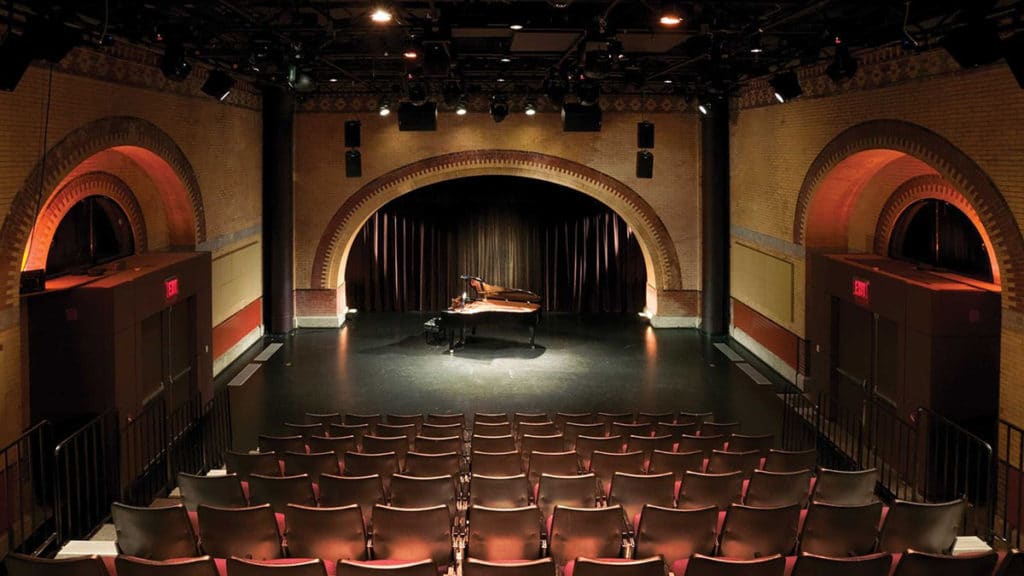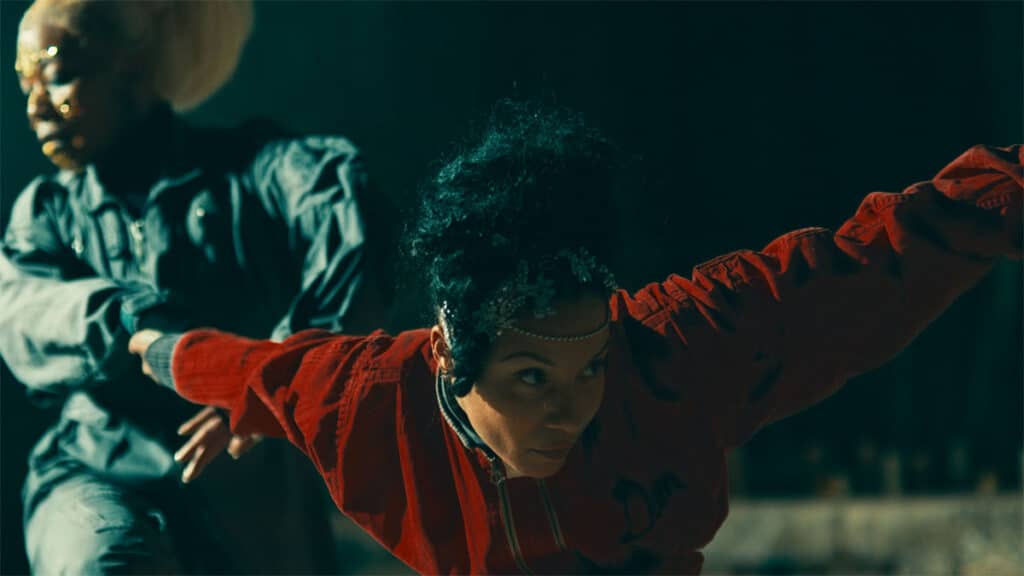
Harlem Stage is a performing arts center for visionary artists of color in Manhattanville, West Harlem, Manhattan. It presents Black, Indigenous, Asian, and Latin dance, film, music, and theatre. Having developed emerging talent for over 40 years, Harlem Stage is part of the conversation of what it means to be American today.
It’s a very fun place to visit. The Uptown crowd is diverse and a story in itself. They are young creatives who represent the shared future of our country. Harlem Stage doesn’t just present great art, it is a community.
Thank you for sponsoring dance, film, and music in New York Latin Culture Magazine. You have become part of our DNA.
Latin Culture at Harlem Stage
JUNE
African American Contemporary Dance (E-Moves Festival)
When We Dance, The Son Also Rises: Black Men in Dance is an evening of conversation, choreography, and cocktails co-curated by American Ballet Theatre Principal ballet dancer Calvin Royal III, and ballet teacher Ronald K. Alexander (Joffrey Ballet School, Ailey School, Dance Theatre of Harlem…); at Harlem Stage in Manhattanville, West Harlem; on Monday, June 2, 2025 at 7pm.
Editor Iroko Kíkokí ~ The “Sun Also Rises” could be a reference to the Hemingway novel about American expatriates who travel from Paris to Pamplona, Spain to experience the running of the bulls, but “The Son Also Rises” is probably a reference to the Gregory Clark book on social mobility. Clark did an economic analysis of several world cultures in America, Europe, Asia, and South America. He concluded that social mobility has a genetic influence, which I disagree with completely. The distribution of genius is equal among all races, places, and across time.
African and Indigenous descendants tend to excel in dance because in our traditional heritage cultures, dance is how we pray. It’s the organizing principal of traditional communities and marks passages through the stages of life. Everyone dances as an expression of both individuality and belonging to the community. Even if the original religious meanings of dance are now long forgotten, the joy of dance passes down through families. So I think social mobility through dance derives from family and cultural influences.
Black men’s success in dance reminds me of the colonial era concept, “Each One, Teach One.” Back in the day we weren’t allowed to learn to read. So anyone who received that blessing had a responsibility to teach someone else. Both Calvin and Royal are very successful Black dancers who have devoted themselves to teaching the next generation. They bring social mobility through the extended family. So let’s dance!

Nova Frontier Film Festival
The Nova Frontier Film Festival; a showcase of African Diaspora, Middle Eastern, and Latin American film; explores the choices we make on the long road to freedom; at Harlem Stage in Manhattanville, West Harlem, Manhattan; from Thursday-Saturday, June 5-7, 2025. From $25. All-Access Freedom Pass $60. Go all in. Freedom is worth the price. harlemstage.org 🇺🇸 🇧🇪 🇬🇧 🇫🇷 🇬🇳 🇮🇷 🇲🇽 🇸🇳 🇪🇸 🇹🇷
MAY
African American Contemporary Dance (E-Moves Festival)
Bebe Miller Company “Indifferent Forest” premiere uses the wisdom of the forest to find interdependent ways to dance on shared ground. The show includes performances of “Rain” (1989) and “Rhythm Studies” (1999); at Harlem Stage in Manhattanville, West Harlem, Manhattan; on Thursday, May 8, 2025, at 7pm. $25. 🇺🇸
Editor Iroko KíkokÍ ~ Remember the expression, “You can’t see the forest for the trees”? As emotional beings, we can get so upset by the injustice of life that we get distracted from the course of our own journey. We can lose sight of our personal forest because some trees block our way. But the forest doesn’t care. It just keeps growing. That may be the message of “Indifferent Forest.”
African American Gala
The Harlem Stage 2025 Gala is on Monday, May 19, 2025 at 7pm. From $1,500.
Past Featured Artists
You get to see famous artists, and some who are going to be famous. To date, five Harlem Stage artists have gone on to win MacArthur Genius Fellowship Awards: Kyle Abraham (2013), Vijay Iyer (2013), Jason Moran (2010), Bill T. Jones (1994), and Cecil Taylor (1991).
- Camille A. Brown, African American contemporary dance. 🇺🇸
- Circa ’95, Puerto Rican hip-hop. 🇵🇷
- Curtis Brothers, Puerto Rican, Cuban jazz. 🇵🇷 🇨🇺
- Dafnis Prieto and Luciana Souza, Cuban and Brazilian jazz. 🇨🇺 🇧🇷
- Flor De Toloache Mexican tropical mariachi. 🇲🇽 + 🇨🇺 🇩🇴 🇵🇷
- Leyla McCalla Haitian classical, folk. 🇭🇹
- Louis Hayes, African American NEA Jazz Master drummer. 🇺🇸
- nora chipaumire Zimbabwean Shona dancer and performance artist. 🇿🇼
- Pablo Mayor Folklore Urbano, Colombian salsa and folk. 🇨🇴
- Pedrito Martinez Cuban rumba, timba, and jazz percussionist. 🇨🇺
- Repertorio Español Spanish-language repertory theatre. 🇨🇺
- Tito Puente, Puerto Rican mambo and Latin jazz. 🇵🇷
- Yasser Tejeda, Dominican alternative. 🇩🇴
The Black Arts Movement: Then and Now Conference showed how the recent flowering of African Diasporic culture (2020-2025) was an echo of the Black Arts Movement of the 1960s-1970s, and the Jazz Age of the 1920-1930s.
About Harlem Stage
The Croton Aqueduct enabled New York City to grow through its supply of clean, fresh water. The Croton Aqueduct Gate House was built in 1884 and decommissioned in 1984. In 2006, the gate house, a place where water flows, was converted into Harlem Stage. Water is life. In Mother Afrika as in many cultures, we worship water, and in Caribbean and Brazilian Yoruba tradition, we say, “somos hijos del mar” (we are children of the sea).
Strong curation brings both stars and rising talent to Harlem Stage. Don’t you wish you saw Harry Belafonte, Max Roach, Sekou Sundiata, Sonia Sanchez, Maya Angelou, or Tito Puente there?
Harlem Stage’s small logo for tabs on a web browser, looks to us like it’s based on the Yowa, the Kongo cosmological diagram ~ a cross in a circle. The horizon in the Yowa is the Kalûnga line. It’s a water boundary between worlds, which in the Kongo context, is the Atlantic Ocean. In the Kongo context, as in many others, spirits live under the water. Water is sacred, and so is Harlem Stage.
The Yowa circle turns counterclockwise, like the sun’s journey across the sky, from east to west, and like one’s psychological journey through life. We think it’s why the line of dance in Argentine tango (an African Diasporic dance) is counterclockwise. If we are correct, this has a lot of meaning for a former waterworks that presents African Diasporic culture in the Americas. It’s a rich symbol, full of meaning, just like Harlem Stage.

Harlem Stage Artistic Director Dr. Indira Etwaroo is an award-winning producer, director, scholar, and arts and culture executive. She was the first director of the Steve Jobs Theater at Apple Park in Cupertino, California. She led The Black Seed, a financial incubator for Black Theater, and was the inaugural Executive of the Chadwick Boseman Foundation. She also led the Billie Holiday Theatre in Brooklyn, and was the Founding Executive Producer and Director of The Greene Space, and Founding Executive Producer and Director of NPR Presents.
Editor Iroko Kíkokí ~ It’s an honor to work with you because of your importance in communities of color, and because my own journey has taught that we are far more Black and Indigenous than most of us have been taught, both as Latins ~ and as Americans of the United States. I learn from you, and for that I am eternally grateful. Harlem Stage is part of my cultural DNA. Thank you.
Social Media
Facebook @MyHarlemStage
Instagram @harlemstage
Harlem Stage Tickets
Harlem Stage
150 Convent Ave
(at West 135th St)
Manhattanville, West Harlem, Manhattan
